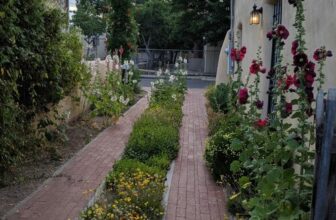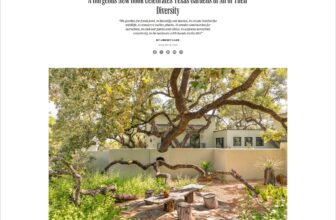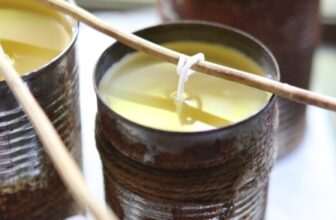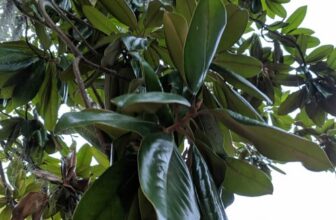Happy Monday GPODers!
While we’ve been reveling in the color and intensity of peak season landscapes through some incredible 2024 garden retrospectives, we’re starting this week with a reminder that there is still color and interest to be found in winter. This past fall we received a fabulous tour of Cleo Raulerson’s stunning back garden in Bellevue, Washington as it showed off gorgeous fall color and a tapestry of diverse textures and forms (Late October in Cleo’s Back Garden). Now she’s treating us to a tour of her front garden in the thick of winter, and the space is looking anything but drab or dull.
My garden is designed to have color and interest year-around with winter being mostly greens, browns and a few touches of color (yes, brown is a good garden color). Pots, sculptures and garden features play a key role.
I have long had a “messy winter garden” with seedheads, brown perennials and fallen leaves for winter interest—now research has found that it is healthier for our gardens and its critters, too. Yay!
My October post focused on the back garden. My winter post shows my front garden with our mid-century modern house on a rare, sunny January day.
 Layers on a garden bank: red berries of rockspray cotoneaster (Cotoneaster horizontalis, Zones 5–7); soft shield fern (Polystichum setiferum, Zones 6–8); and ‘Speedy Silver Rose’ cyclamen (Cyclamen hederifolium ‘Speedy Silver Rose’, Zones 5–9) tucked in among mossy boulders.
Layers on a garden bank: red berries of rockspray cotoneaster (Cotoneaster horizontalis, Zones 5–7); soft shield fern (Polystichum setiferum, Zones 6–8); and ‘Speedy Silver Rose’ cyclamen (Cyclamen hederifolium ‘Speedy Silver Rose’, Zones 5–9) tucked in among mossy boulders.
 ‘Ever Red’ laceleaf Japanese maple (Acer palmatum var. dissectum atropurpureum ‘Ever Red’, Zones 5–8), planted in 1989 is the focal point of the front garden. Blue pots mostly have ‘Autumn Joy’ sedum (Hylotelephium ‘Herbstfreude’, Zones 3–10) and other sedum seedheads.
‘Ever Red’ laceleaf Japanese maple (Acer palmatum var. dissectum atropurpureum ‘Ever Red’, Zones 5–8), planted in 1989 is the focal point of the front garden. Blue pots mostly have ‘Autumn Joy’ sedum (Hylotelephium ‘Herbstfreude’, Zones 3–10) and other sedum seedheads.
 “Welcome Garden” peace pole with different view of the laceleaf Japanese maple.
“Welcome Garden” peace pole with different view of the laceleaf Japanese maple.
 ‘Little Heath’ lily-of-the-valley shrub (Pieris japonica ‘Little Heath’, Zones 5–9) in front of dwarf zebra grass (Miscanthus sinensis ‘Hinjo’, Zones 5–9) and ‘Little Miss’ maiden grass (M. sinensis ‘Little Miss’, Zones 5–9) in the entry garden. ‘Snowflake’ oakleaf hydrangea (Hydrangea quercifolia ‘Snowflake’, Zones 5–9) in upper right of photo is my favorite 4-season shrub. The metal prickly pear sculpture by Desert Steel, seen between the 2 maiden grasses, is a visitor favorite.
‘Little Heath’ lily-of-the-valley shrub (Pieris japonica ‘Little Heath’, Zones 5–9) in front of dwarf zebra grass (Miscanthus sinensis ‘Hinjo’, Zones 5–9) and ‘Little Miss’ maiden grass (M. sinensis ‘Little Miss’, Zones 5–9) in the entry garden. ‘Snowflake’ oakleaf hydrangea (Hydrangea quercifolia ‘Snowflake’, Zones 5–9) in upper right of photo is my favorite 4-season shrub. The metal prickly pear sculpture by Desert Steel, seen between the 2 maiden grasses, is a visitor favorite.
 The Seattle area has had a wetter, warmer winter than usual so some of our perennials have dabs of late color: red blooms of Mexican cardinal flower (Lobelia laxiflora, Zones 7–11) in front of Ozark bluestar (Amsonia illustris, Zones 5–9) stems which were left for our native bee and wasp nests in the spring.
The Seattle area has had a wetter, warmer winter than usual so some of our perennials have dabs of late color: red blooms of Mexican cardinal flower (Lobelia laxiflora, Zones 7–11) in front of Ozark bluestar (Amsonia illustris, Zones 5–9) stems which were left for our native bee and wasp nests in the spring.
 Colorful leaves of heavenly bamboo (Nandina domestica ‘Blush Pink’, Zones 6–9).
Colorful leaves of heavenly bamboo (Nandina domestica ‘Blush Pink’, Zones 6–9).
 Metal owls, by Abraxas Crow, guard the west front garden with variegated false holly (Osmanthus heterophyllus ‘Goshiki’, Zones 6–9) on the left, Golden Sword yucca (Yucca filamentosa ‘Golden Sword’, Zones 4–9) in front center and lots of brown seedheads/stems throughout the garden bed.
Metal owls, by Abraxas Crow, guard the west front garden with variegated false holly (Osmanthus heterophyllus ‘Goshiki’, Zones 6–9) on the left, Golden Sword yucca (Yucca filamentosa ‘Golden Sword’, Zones 4–9) in front center and lots of brown seedheads/stems throughout the garden bed.
 Golden English yew (Taxus baccata ‘Standishii’, Zones 4–9) under the lamp post and Kanjiro camellia (Camellia sasanqua ‘Kanjiro’, Zones 7–10) feeding the hummingbirds.
Golden English yew (Taxus baccata ‘Standishii’, Zones 4–9) under the lamp post and Kanjiro camellia (Camellia sasanqua ‘Kanjiro’, Zones 7–10) feeding the hummingbirds.
 Contorted Filbert catkins (Corylus avellana ‘Contorta’, Zones 4–8) ready to open-up with the first warmth of spring.
Contorted Filbert catkins (Corylus avellana ‘Contorta’, Zones 4–8) ready to open-up with the first warmth of spring.
Thank you so much for another inspiring tour of your gardens, Cleo! I cannot begin to imagine the beauty we’ll encounter when we finally get to see your space in its full spring and summer glory.
And one final note. A couple of weeks ago, I inquired about the many GPODers who open up their gardens for local gardening groups and tours. Cleo is one of those gracious gardeners and, as part of this submission, included this great note on gardening tours and why she loves participating in them:
You asked about people who participate in garden tours. I love to open my garden for tours. It is so much fun to talk to the visitors. I am a deadline person so having a target date really helps me get the garden in tip-top shape. I have had tours for about 10 years with various gardening organizations. I also like going on garden tours—I have learned so much, seen some amazing gardens and met interesting people.
What a motivating testimonial to the benefit of opening up your space to others, as well as joining these tours to see other inspiring spaces. If you’ve been hesitate about sharing your gardens before, let Cleo’s words serve as a source of encouragement! And if you’re in the Bellevue, Washington area, keep your eye out for opportunities to see Cleo’s incredible gardens in person.
Have a garden you’d like to share?
Have photos to share? We’d love to see your garden, a particular collection of plants you love, or a wonderful garden you had the chance to visit!
To submit, send 5-10 photos to [email protected] along with some information about the plants in the pictures and where you took the photos. We’d love to hear where you are located, how long you’ve been gardening, successes you are proud of, failures you learned from, hopes for the future, favorite plants, or funny stories from your garden.
Have a mobile phone? Tag your photos on Facebook, Instagram or Twitter with #FineGardening!
Do you receive the GPOD by email yet? Sign up here.
Fine Gardening Recommended Products
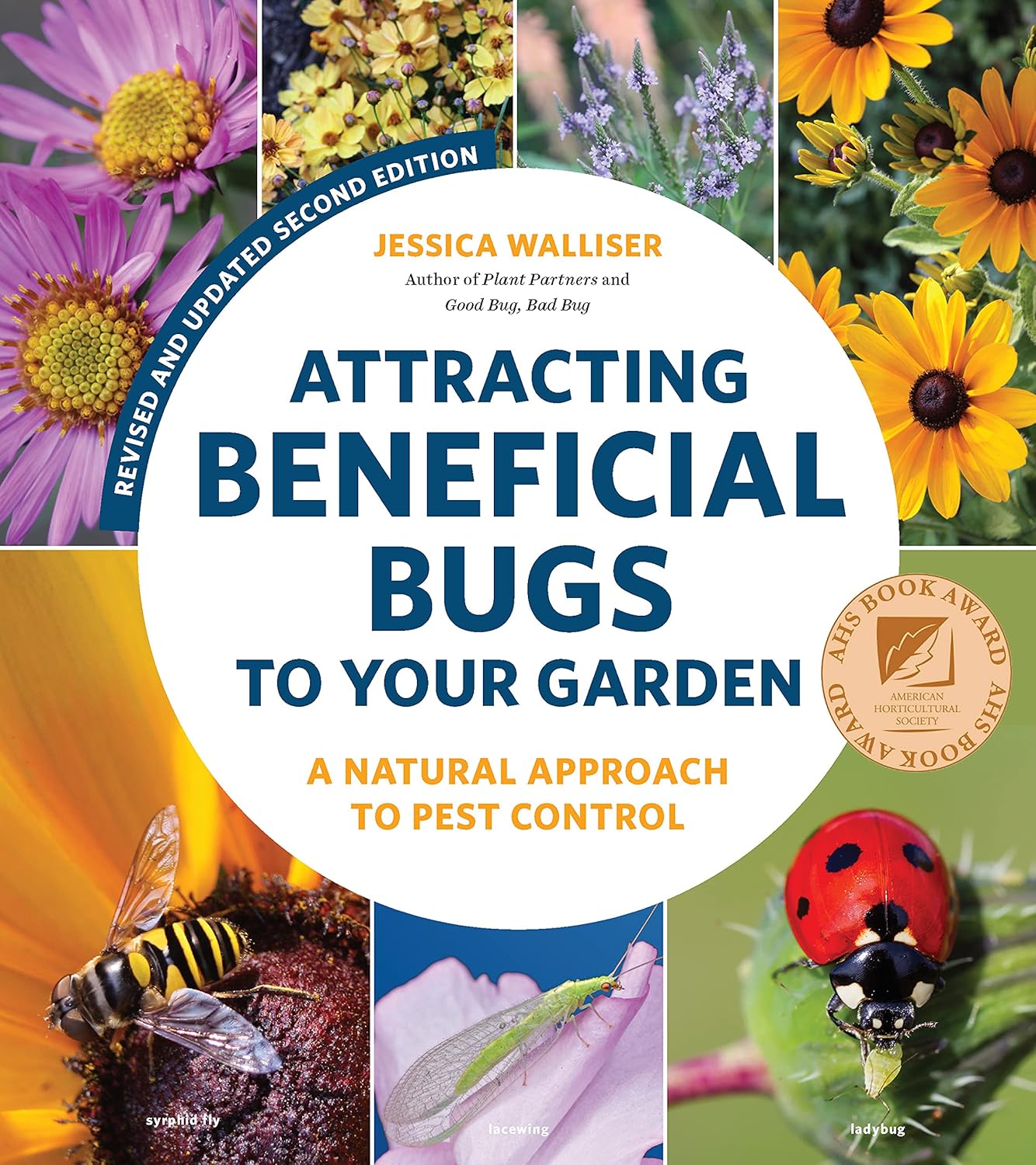
Attracting Beneficial Bugs to Your Garden, Revised and Updated Second Edition: A Natural Approach to Pest Control
Fine Gardening receives a commission for items purchased through links on this site, including Amazon Associates and other affiliate advertising programs.
This revised and updated edition of Jessica Walliser’s award-winning Attracting Beneficial Bugs to Your Garden offers a valuable and science-backed plan for bringing balance back to the garden. With this indispensable gardening reference—now updated with new research, insights, and voices—learn how to create a healthy, balanced, and diverse garden capable of supporting a hard-working crew of beneficial pest-eating insects and eliminate the need for synthetic chemical pesticides.
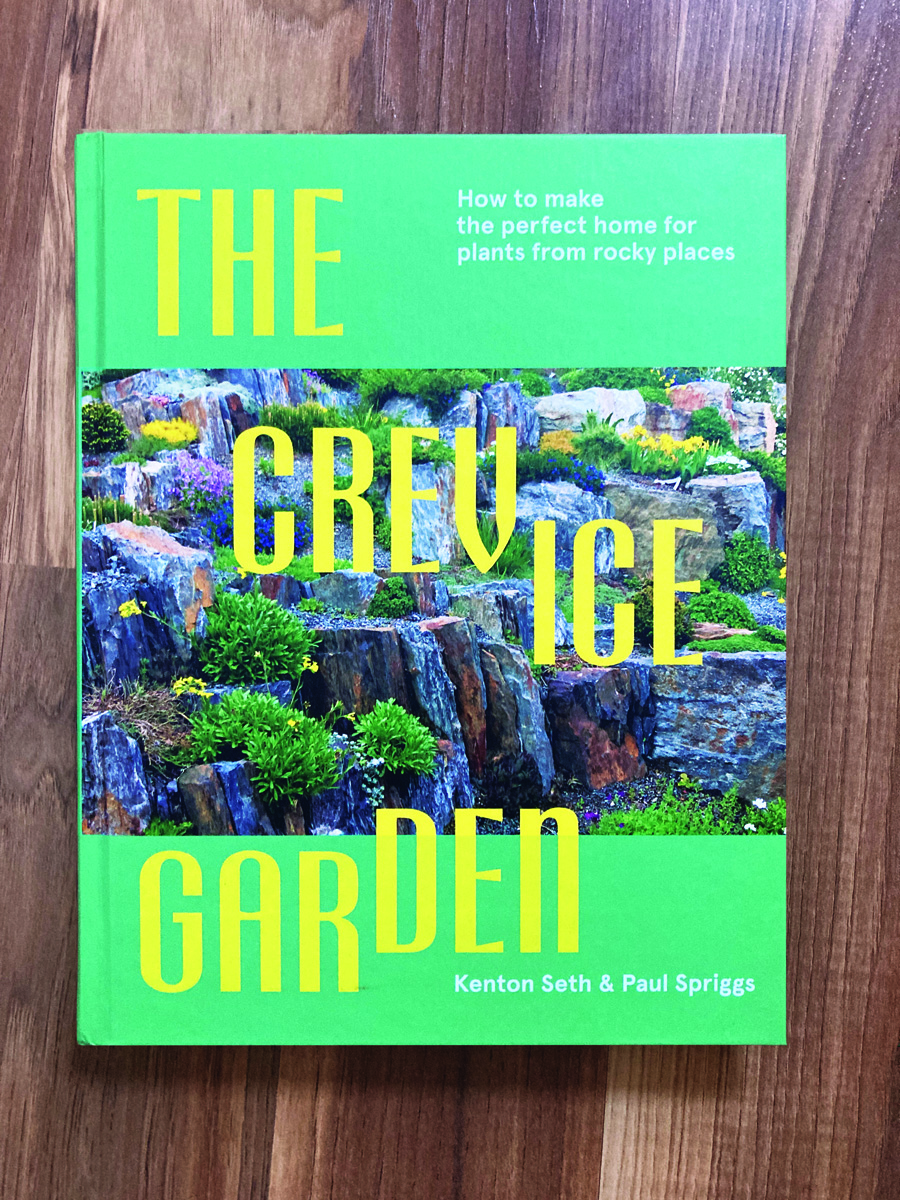
The Crevice Garden: How to make the perfect home for plants from rocky places
Fine Gardening receives a commission for items purchased through links on this site, including Amazon Associates and other affiliate advertising programs.
A crevice garden replicates the environmental conditions of mountain tops, deserts, coastlines, and other exposed or rocky places on earth. These striking garden features provide perfect conditions for the plants native to these far-off places, bringing the cultivation of these precious gems within everybody’s reach.

Wagner’s 52003 Classic Blend Wild Bird Food, 6-Pound Bag
Fine Gardening receives a commission for items purchased through links on this site, including Amazon Associates and other affiliate advertising programs.
Classic wild bird food uses the highest quality grains to attract backyard wild Birds. A high-quality mix containing Millet, milo, cracked corn and Sunflower for a wide range of wild birds to enjoy. Perfect for tube, hopper, or platform feeders. Great to feed in all seasons! Perfect for the winter, when seeds are scarce; spring and summer for hatchlings; and autumn to give energy to migrating birds. This seed will help you fill your yard with birds such as Jays, cardinals, doves, Juncos, finches, goosebeaks, any many more.

